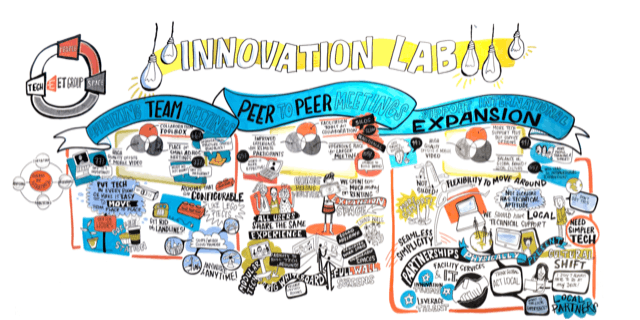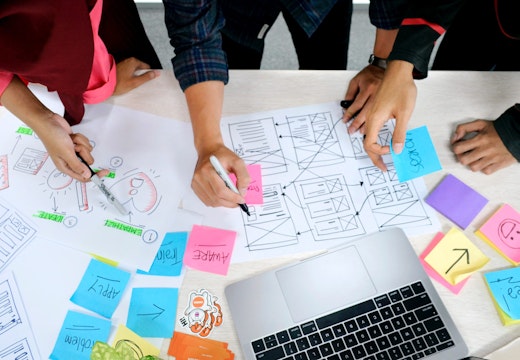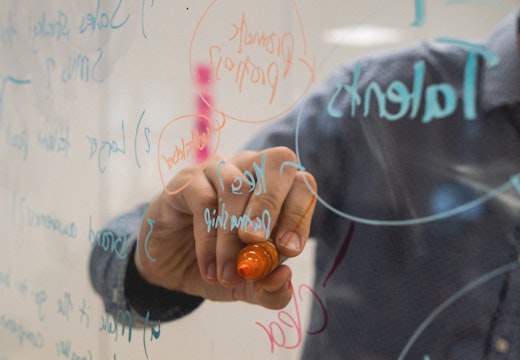Can design thinking unlock technology integration for hybrid?
As companies grapple with the challenge of implementing tech solutions for hybrid working, a pioneering approach by a group of Canadian tech integrators demonstrates the benefits of empathy and co-creation
One of the toughest challenges in making hybrid work happen is to integrate technology into organisational strategies and systems. Everyone agrees that the successful application of technology is the key that unlocks new ways of working, but there appears to be far less consensus on how to go about the process.
As companies scramble to invest in new technologies, they are looking for harmony and balance in how these solutions are implemented. In particular, new tools and approaches need to fit the needs of the people who will drive the organisation forward. Too often, however, technology integration lacks that people-centric perspective, making innovation in this area less effective than it should be.
Could it be that that the process of creating tech solutions for hybrid working itself needs an upgrade?
New paths to innovation
One way to design technology integration in a more creative and human-centred way is to bring design thinking (DT) principles into the mix. Design thinking first emerged in the immediate aftermath of the global financial crash of 2008 as companies sought new paths to innovation and an alternative angle to address business problems. Corporate adoption was rapid in a range of fields from consumer goods to financial services, which was suffering a crisis of trust and legitimacy.
Technology integrators and their clients were generally slower to take DT on board, especially its focus on including end users more democratically in the development process. But now, as organisations once again seek to adapt to a global shock to the system and to build more dynamic and inclusive work environments in the aftermath of the Covid-19 pandemic, design thinking is being increasingly being viewed as offering a positive way forward.
‘Design thinking allows us to understand the different views of different users’ – Dirk Propfe, ET Group
Canadian collaboration technology integrator ET Group has pioneered the use of DT with a range of international clients over the past two years. ‘Design thinking allows us to understand the different views of different users, so we are not just designing technology for the sake of technology,’ says ET Group CEO Dirk Propfe. ‘That’s why we’re taking this approach.’
Clients as co-creators
Lisa Perrine, a strategic partner and advisor to ET Group in this field, describes DT as a collection of methodologies ‘that allow a group of diverse people to work together and use their own experience to solve a problem – the clients are co-creators.’ Perrine believes that design thinking brings a different mindset to technology integration – one that is participatory rather than expert, and more willing to fail fast in order to learn and succeed.
Making it safe to fail is among the central tenets of design thinking. So is rapid prototyping to test new ideas. Michael Oppedisano, Project Lead at ET Group, explains: ‘Our approach is to brainstorm, prototype and deploy. There may be a scenario that no-one thought about. We then learn from our failures, improve on them, and deploy more widely.’
Perrine adds: ‘The most important thing is starting with why and establishing what success looks like from the beginning. We tend to start the conversation with the client with culture, goals and the needs of the organisation – something other than technology. Then we weave the technology back into the solution, but it’s not the entire solution.’
Barriers to change
Challenging basic assumptions is one of the core DT principles most likely to resonate with companies trying to figure out the new hybrid world of work. But why has progress been so slow in seizing the opportunities of design thinking in the tech integration arena?
The biggest barrier, says Dirk Propfe, is the mindset of the key players involved. ‘From the integrator’s perspective, they expect to be the expert on the technology; from the client’s perspective, IT and HR teams are expected to understand and support the specific business needs of different teams in the organisation. There’s often not a lot of understanding or collaboration between the two. Complex issues require different ways of thinking and working together. More people are now appreciating design thinking, but it took a while to get there. Some clients genuinely want to collaborate whereas others just want the cheapest or fastest approach.’
According to Chris Wheeldon, who leads design thinking engagements at ET Group, ‘courage and trust are required on both sides. There needs to be a conversation that is open to possibilities that neither side anticipated.’ Lisa Perrine adds: ‘People don’t know enough about design thinking – therefore they don’t know how much investment in time and money it will take.’
Focus on discovery
In reality, the application of DT principles involves no more time and money than a conventional development process. But there are important differences in methodology. There is a deliberate focus on the front-end of the innovation process – those discover-and-define phases that wrestle with the problem from every angle – rather than a reflex rush to delivering solutions. Wheeldon explains: ‘We start with people’s pain points, values and objectives. It can feel like a therapy session. Sometimes we are the first people to ask about these things.’
‘It’s about honouring the talents of the people in your organisation’ – Chris Wheeldon, ET Group
Visualisation and mapping are also a part of the process. ET Group uses graphic artists to record the co-creation activities on each project so that clients have a visual record of key discussions and decisions. In these co-creation sessions, the aim is to ensure that diverse voices from different levels of the company contribute to shaping the design. ‘It’s about honouring the talents of the people in your organisation,’ says Chris Wheeldon. Dirk Propfe adds: ‘Many times the IT department hasn’t had generative conversations with end users – we can facilitate those discussions.’

Art of the possible
Curiosity with how organisations work, empathy with users, a willingness to experiment rapidly, an ability to navigate ambiguity and a commitment to the ‘art of the possible’ are all characteristics that have compelled companies in many fields over the past decade to use design thinking techniques as tools for organisational transformation.
Now, as hybrid working poses new challenges for tech integration, has DT’s time come at last in the workplace arena? ET Group CEO Dirk Propfe believes this is so: ‘It’s a process that resonates with people who understand that different components need to come together. The good thing is that we’re still learning about the hybrid workplace – everyone is learning together.’








